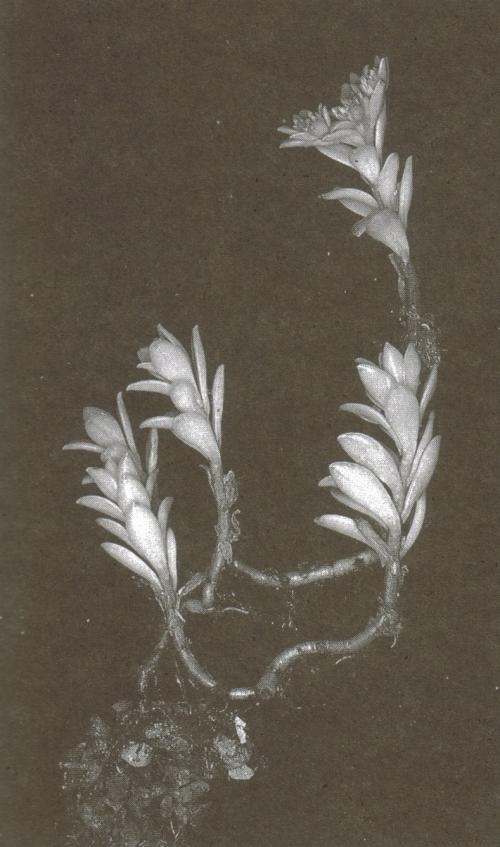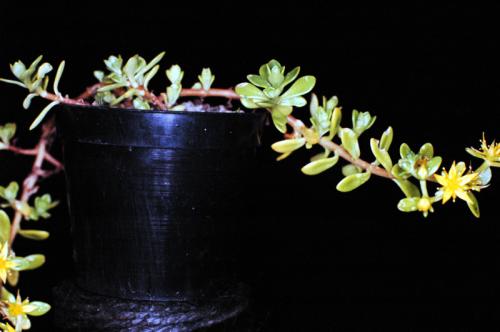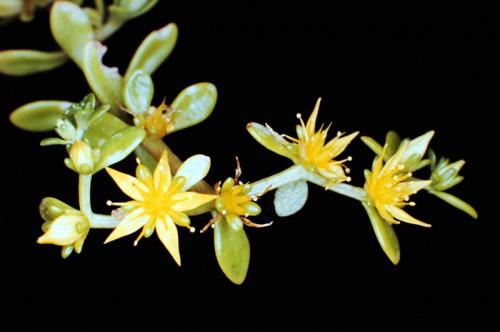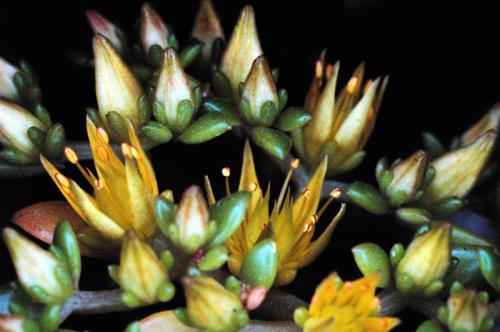NAGASAKIANUM (Hara) H. Ohba, 1981
Synonym : Sedum alfredii var. nagasakianum Hara (1947)
Distribution : Japan (Western and southern Kyushu); on rocks along the coast.
Description (according to IHSP, 2003) :
Tufted perennial herbs.
Leaves alternate or opposite, ± crowded, broadly spatulate-oblong to obovate, subacute, obtuse or retuse, sometimes mamillate towards the tip, 5 - 15 mm.
Inflorescences : Flowering branches numerous, ascending, slender, 10 - 20 cm.
FIowers 5-merous, sepals broadly sessile, basally connate, unequal, broadly oblanceolate to semi-oblong, subacute to retuse, 2,5 - 5 mm, petals linear-lanceolate, shortly mucronate, yellowish, 6 - 7 mm.
Cytology : n = 62 (Uhl & Moran 1972)
Similar to S. alfredii from China, but with larger flowers and leaves and bracts with rounded tips.
Ray Stephenson (Sedum, Cultivated Stonecrops, 1994, pp 162 - 163) :
Sedum nagasakianum has the appearance of a fairly typical Japanese sedum, but is more upright and has wider leaves than those of S. lineare and S. sarmentosum. It forms a low, fairly open, bushy plant to about 15 cm (6 in) high. Opposite at first, flat, lanceolate leaves are midway between those of S. makinoi and those of S. sarmentosum. Flowers of midsummer are produced on simple or branched inflorescences. Plants are rare in cultivation, even in Japan, though they are easy to grow.

Sedum nagasakianum is best identified by the shape, size, and disposition of its leaves.
Habitat : Kyushu, the most southerly of the large Japanese islands, is the home of this stonecrop.
Main points of distinction : Shape, size, and disposition of leaves are the best means of identification. Relatively acute apices of leaves immediately separate this species from Sedum makinoi, and width of leaves differentiates it from S. sarmentosum. Sessile flowers have unequal, free sepals without spurs, mucronate petals, and short stamens. Carpels are not particularly wide spreading.
Variation : Leaves are sometimes ternate below and scattered above. n = 62, and possibly n = 65.
Horticulture : This is only a half-hardy species; plants prefer shade and damper spots. They easily damp-off in warm, still winters in a greenhouse. Sedum nagasakianum would make a superb ground cover in warmer temperate zones. Its sprawling nature necessitates growing the species in hanging baskets in cooler areas.


